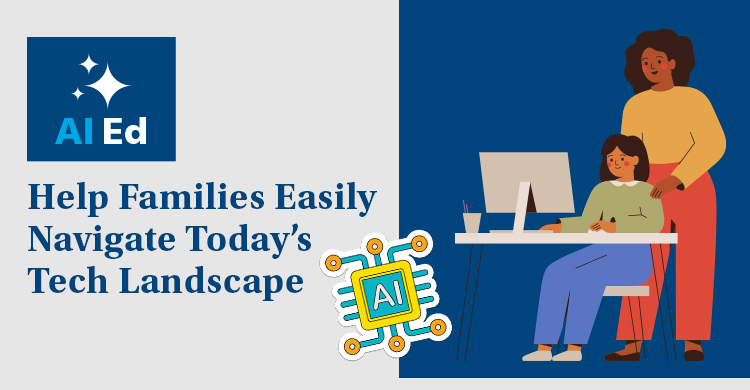One of the most frequently asked questions I receive when facilitating professional development sessions is “How can we get on the same page?”
Let’s imagine two families, “Family A” and “Family B.” Parents in Family A are on the same page for their children. The children are clear on what is expected of them and learn how to demonstrate respect and responsibility for themselves and to others. Family B’s parents are not on the same page. One parent operates out of power and control, while the other parent tolerates behaviors that are unacceptable to the first. The children are confused and anxious, which often leads to misbehaviors and chaos.
School systems are not exactly the same as family systems, but they are similar. School environments can have several dozen educators and hundreds of students, so “getting on the same page” is difficult but doable.
To address this issue, let’s begin with questions, such as:
- Are we committed to ensuring high levels of learning for all students?
- What behaviors do we need to commit to in order to be the most effective school community for the students we serve?
- How do we set schoolwide behavioral expectations? Classroom expectations? Do we use top-down rules, or do we use a process of agreement? Or both?
- How do we assess student learning? Do our grading practices measure learning in a fair, meaningful, and accurate manner?
- How do we respond when students are struggling academically or behaviorally? Do we operate out of power and control, or are we relationship oriented?
When professional learning communities consider these questions, invariably they need to clarify the decision-making process. There is a plethora of evidence to support that educators make hundreds of decisions every day, and those decisions have a significant impact on the learning environment and student learning outcomes.
How are decisions made at your school?
Who makes which decision? Are your decisions driven by:
- Personal preference: Everyone is doing whatever they want, whenever they want, however they want.
- Compliance: “Because I told you to.”
- Habit: “Because we’ve always done it this way.”
- The loudest voice
- The averaging of opinions, or
- Evidence: Seeking the most promising practices that result in high levels of learning and growth for all students.
As a school committed to the Professional Learning Community at Work™ process, our staff recognized the importance of getting on the same page for our students. In Leaders of Learning, Rick DuFour and Bob Marzano write, “Effective school leaders have resolved this bottom-up versus top-down dilemma by embracing the concept of defined autonomy, or simultaneous loose-tight leadership.” At our school, the leadership team, and then the entire staff, examined how we were making decisions. In our district, the principal was responsible for all school decisions, although the principal did not make all decisions. Through the use of protocols, we created an ABCD Decision-Making Matrix. The matrix delineated who made which decisions. We made sure that our matrix aligned with district policies, our shared mission and the PLC at Work guidelines for “tight” and “loose.” (Learning by Doing, 2016).
The principal is responsible for all decisions but cannot make all decisions.
| A-DECISIONS | B-DECISIONS | C-DECISIONS | D-DECISIONS |
| The principal solicits little to no input. | The principal solicits lots of input through the use of protocols.
|
Consensus: Decision is made when all points of view have been heard and the will of the group is evident even to those most opposed. The principal is one voice. | Collaborative teams and the individual teachers make decisions. The principal monitors. |
ABCD Decision Examples:
- A-Decisions: The principal solicits little to no input and then decides operational tasks, such as scheduling fire drills or what to communicate with the media.
- B-Decisions: The principal uses protocols to solicit input on operational decisions like the master schedule, the budget, or storage space. Staff discussions increase transparency, ownership and a deeper understanding of time, money, and space resources.
- C-Decisions are made by consensus. The consensus process is used to develop the shared mission, shared vision, collective commitments, and goals. Professional Learning Communities at Work™ use this shared foundation to guide all decisions and day-to-day practices. The principal participates, representing one voice during this consensus process, then promotes and protects consensus decisions.
- D-Decisions: Collaborative teams decide their own norms; SMART goals; the specific knowledge, skills, and dispositions that students needed to acquire for each unit; the pacing for each unit; the standard for proficiency; and the analysis of results from team-made common formative assessments. Individual teachers decide their own instructional strategies used to: communicate the learning target(s), engage students, differentiate instruction, check for understanding, and create a positive classroom learning environment. The principal monitors these decisions by visiting classrooms and collaborative team meetings, and by collecting team artifacts.
School communities can either be intentional about getting on the same page or leave it up to chance or luck. In the final analysis, educators will either: make things happen, ask “What happened?”, or wonder what happened. Either way, it’s a decision.
References:
Dufour, R; Marzano, R (2011). Leaders of Learning: How District, School, and Classroom Leaders Improve Student Achievement. Bloomington, IN: Solution Tree Press.
DuFour, R., DuFour, R., Eaker, R., Many, T., Mattos, M. (2016). Learning by Doing: A Handbook for Professional Learning Communities at Work (3rd Edition). Bloomington, IN: Solution Tree Press.
[author_bio id=”176″]






